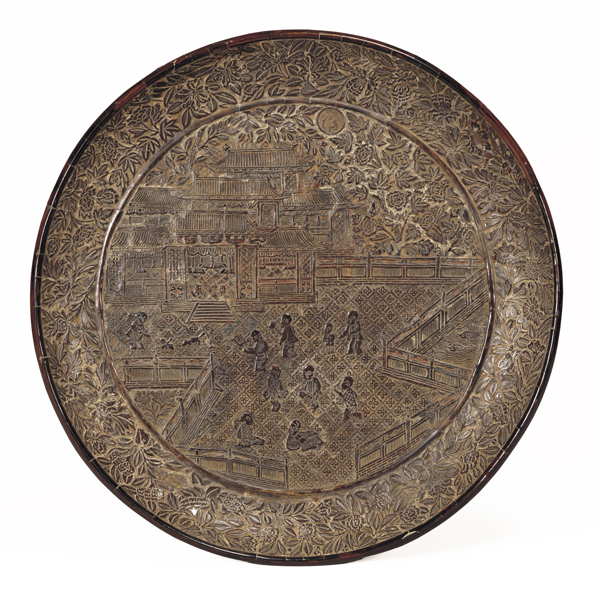Chinese Lacquerware
-

Tray with Pavilions and Figures
China, Southern Song dynasty, 12th–13th centuryAsian Gallery (Toyokan) Room 9
March 25, 2025 (Tue) - June 22, 2025 (Sun)Lacquer is the sap of the lacquer tree, which grows in East and Southeast Asia. Naturally sticky, it can be brushed onto different materials, and it hardens into a durable coating that is waterproof and resistant to acids, alkalis, and heat. The history of lacquerware in China dates back to the Neolithic period (ca. 10,000–2100 BC). Over the millennia, a number of decorative techniques evolved in China, including lacquer relief carving and lacquer with incised lines filled with gold leaf. Chinese lacquerware frequently feature abstract spiral patterns (called “pommel scrolls”) or pictorial scenes of landscapes, flowers, birds, pavilions, and people.
| Designation | Name | Creation/ Excavation/ Provenance |
Period | Acquisition/ Ownership/ Accession Number |
CMT | ||
| Box with Pommel Scrolls | China | Yuan dynasty, 14th century | TH-50 | ||||
| Highlight | Tray with Pommel Scrolls | China | Yuan dynasty, 14th century | TH-397 | |||
| Highlight | Tray with Pavilions and Figures | China | Southern Song dynasty, 12th–13th century | TH-400 | |||
| Highlight | Box with a Dragon among Clouds | China | Ming dynasty, Xuande era (1426–35) | TH-402 |
